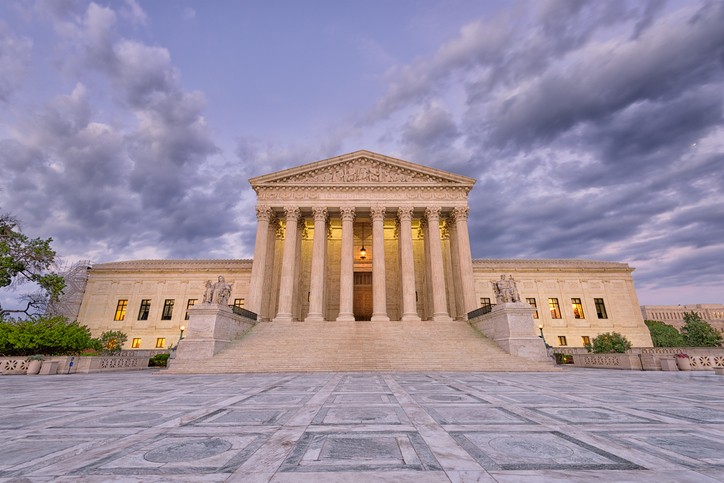July 12, 2018
A Very Short Abortion Law Primer
Professor of Law, University of Miami School of Law

The constitutional right to abortion is bound to play a major role in Brett Kavanaugh’s confirmation to the Supreme Court. Here’s a very brief primer on the current state of the constitutional right and how Justice Kennedy’s replacement might help dismantle it.
Part I: Abortion law today
Everyone has heard of Roe v. Wade, the Supreme Court case that held women have a constitutional right to abortion. But the controlling cases in abortion jurisprudence are actually Planned Parenthood of Southeastern Pennsylvania v. Casey (which cut back but did not eliminate protection) and Whole Woman’s Health v. Hellerstedt (which reinvigorated it). Although Justice Kennedy was not on the bench for Roe, he provided a crucial fifth vote in both Casey and Hellerstedt.
A. Roe v. Wade (1973)
Roe declared that abortion was a fundamental right protected by the U.S. Constitution. Regulations of first trimester abortions (when roughly 90% of abortions occur) were presumptively unconstitutional.
B. Planned Parenthood of Southeastern Pennsylvania v. Casey (1992)
The unwritten question presented in Casey was whether the Supreme Court would overrule Roe. It did not. It did, however, change the test for deciding whether an abortion regulation was constitutional.
Under Roe, regulations were constitutional only if they passed strict scrutiny, a demanding test requiring that the government prove its law was narrowly tailored to advance a compelling government interest. Under Casey, regulations were constitutional unless they imposed an “undue burden”—defined as a substantial obstacle in the path of the woman seeking an abortion. However, significant hardship did not necessarily amount to a substantial obstacle. For example, the Casey Court upheld mandatory waiting periods that forced women to make two (potentially expensive and arduous) trips to her abortion provider.
C. Whole Women’s Health v. Hellerstedt (2016)
Hellerstedt added some rigor to the undemanding “undue burden” test. It required courts to consider a law’s benefits as well as its burdens. That is, in addition to analyzing whether challenged regulations created an obstacle (burden), courts were now to also evaluate whether they advanced the government’s stated purpose (benefit). Because Texas failed to provide evidence that its regulations actually improved women’s health, they were struck down.
Part II: Abortion law in the future
It well known that four members of the Supreme Court are hostile to abortion. Brett Kavanaugh’s fifth vote would allow the Court to remake the law. The Court could expressly overrule abortion precedent or it could change the legal standard to allow most abortion regulations.
A. Overrule Roe
The Supreme Court could say that Roe v. Wade was wrong the day it was decided and declare that the U.S. Constitution does not protection abortion. If so, the Court would be overruling not just Roe but the many Supreme Court cases that have reaffirmed the right to abortion. Not only would such a move be unpopular—2/3 of Americans polled support Roe—but if perceived as a political decision it would raise questions about the Court’s legitimacy.
B. Redefine standard
However, the Court does not need to explicitly reject Roe to change the law. Courts regularly overrule decisions incrementally rather than all at once. With abortion, the Court may once again redefine the standard for constitutionality and/or apply the standard so permissibly that just about all regulations would be found constitutional. Thus, a commitment to keep Roe is meaningless without a commitment to maintain the rigor of Hellerstedt.
III. Abortion Law in the States
Of course, a Supreme Court ruling that the U.S. Constitution does not protect abortion is not the same thing as banning it. Instead, the absence of federal protection means that abortion rights will depend on state law.
A. State Strategies to Eliminate Abortion Rights
Abortion would probably become illegal in at least half of the states. A few states have “trigger” laws in place that automatically outlaw abortion as soon as the Supreme Court overrules Roe. Others have pre-Roe bans on the books that have never been blocked. Still others have legislatures that would quickly enact new restrictive laws.
B. State Strategies to Protect Abortion Rights
Abortion would not become forbidden everywhere in the United States. Even if the federal constitution does not protect abortion, state constitutions might. It might be protected by an express “right to privacy,” such as Florida’s, which promises that “[e]very natural person has the right to be let alone and free from governmental intrusion into the person’s private life.” Or a state Supreme Court may interpret its constitution’s due process clause or equal protection clause to reach reproductive autonomy. Finally, some state legislatures may react by affirming protection for abortion.




